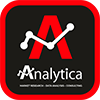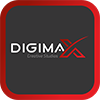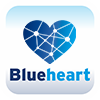
By Nicos G. Sykas Strategy, Communications and Innovation Consultant
Sustainability can be defined as “Meeting the needs of the present without compromising the ability of future generations to meet theirs.” The three pillars of sustainability can be codified as:
1. Social “People”. 2. Financial “Profits” and 3. Environmental “Planet”.
Sustainability in a business context refers to a company’s ability to effectively and simultaneously manage its financial, environmental and broader social performance. Therefore, we refer to the sustainability of a company’s competitive advantage and the focus is on understanding how a business model can synergistically produce financial as well as social and environmental performance. In the absence of substantial innovation, the financial performance of firms declines as their environmental, social and governance performance improves. To simultaneously improve both kinds of performance, they need to invent new products, processes and business models.
©Innovation to the Fourth Power is a new strategy tool that helps organizations create exceptional ideas and actionable insights and transform them into more sustainable innovations. It involves the creative combination of ideas, elements, features and capabilities from the four basic types of innovation –product, process, organizational and marketing– to create more resilient innovations.
This pioneering method: a) Increases exponentially the number of possible combinations and permutations, raising the probability of achieving innovative outcomes and b) follows a more holistic, polyparametric approach, using more than 100 evaluation criteria and success factors across all stages of the innovation cycle: identification of meaningful patterns, insight, idea generation, proof of concept, validation, design, product / market fit, competitive landscape, unique selling proposition, strategic positioning, differentiation, branding, bridging the «Valley of Death», scaleup, transferability, diversification, risk management, minimizing / avoiding human biases, resilience, sustainability, product launch, commercialization, creative advertising etc.
The dynamic, cross-cutting tool presented very briefly in this article can be applied in practically all domains (public administration, cyclical economy, entrepreneurship, financial innovations, education, scientific research, social innovation, smart cities, economic diplomacy, nation branding etc.) and at all sizes and scales (products / services, startups – spinoffs, small and medium sized enterprises, large corporations, new business models, National System for Research and Innovation, Horizon Europe 2021–2027 Program, UN’s Sustainable Development Goals).
The new Innovation Model:
a) Aligns all key stakeholders for faster innovation.
b) Encourages collaboration, interaction and co-creation (cross-fertilization of ideas and disruption of ‘silo-thinking’). The intersection of different fields, disciplines and networks creates new opportunities for growth and innovation.
c) Facilitates cross–disciplinary, cross–sector and cross–actor innovation to achieve multiple, bottom–up solutions.
d) Generates local innovations with European impact and global outlook.
The extensive research and validation phase for the development of this new Innovation Paradigm covered a period of 8 years (2012–2019) during which I carried out more than 500 personal interviews and concept tests with practitioners / experts from Cyprus, Greece, Israel, Germany, United Kingdom, the Netherlands, France, Belgium, Sweden, Spain, Italy, USA, Canada, Korea, Japan, India, China, the European Commission and the World Bank. Executives interviewed represent all domains / sectors: public services, businesses, local government, universities, NGOs. This new Innovation System has been successfully applied in diverse environments.
©Innovation to the Fourth Power –presented analytically in a step by step practical Guide I have prepared– builds innovations that are not only robust but get better with time, they are antifragile. The design / structure of a new innovation should be such that it exploits and benefits from variability, randomness, uncertainty, disorder, volatility and time by minimizing exposure and harm from negative (unfavorable) asymmetries and maximizing exposure and benefit from positive (favorable) asymmetries (more upside than downside from volatility and randomness). The exposure of an innovation can be modified by using a number of creative techniques described in detail in the Innovation Toolkit mentioned earlier.
In his book Antifragile, Things That Gain From Disorder, Professor Nassim Nicholas Taleb –the world’s leading authority on Risk Management– states that: “An option is what makes you antifragile and allows you to benefit from the positive side of uncertainty, without a corresponding serious harm from the negative side […] Let us call trial and error tinkering when it presents small errors and large gains […] The antifragile needs to select what’s best – the best option […] Trial and error… is not really random, rather, thanks to optionality, it requires some rationality. One needs to be intelligent in recognizing the favorable outcome and knowing what to disregard […] We can, from the trial that fails to deliver, figure out progressively where to go […] Innovation is precisely something that gains from uncertainty: and some people sit around waiting for uncertainty and using it as raw material, just like our ancestral hunters”.
You cannot guarantee the success of an innovation. But you can increase your innovation success rate by ensuring that your business model links market needs with emerging and exponential technologies to create all three forms of value: Cost Value, Experience Value and Platform Value (e.g. Uber, Airbnb):
a) Cost Value: Free / ultra-low cost, Buyer aggregation, Price transparency, Reverse auctions, Consumption-based pricing.
b) Experience Value: Customer empowerment, customization, instant gratification, reduced friction, automation.
c) Platform Value: Ecosystem, Crowdsourcing, Communities, Digital marketplaces, Data orchestrator.
















